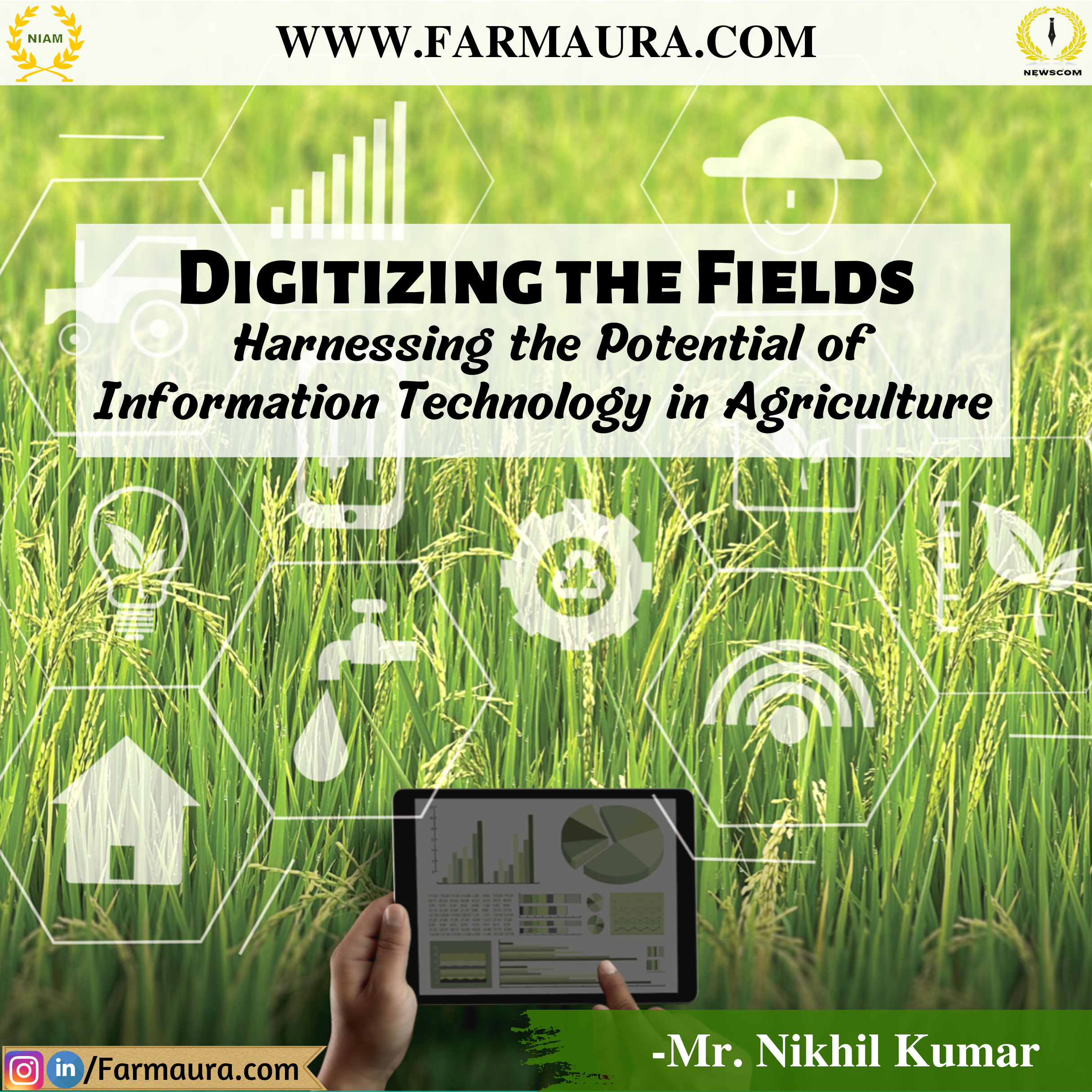Overview
A decade ago, it was thought that information technology and agriculture didn’t go together, but things have changed. Agriculture is becoming widely integrated with information systems. The use of information technology has always had the potential to raise the quality of agriculture and agricultural products, but it requires accuracy and efficiency across the board.
There is a significant place for information technology (IT) in every aspect of Indian agriculture. Bringing the potential of IT for the qualitative enhancement of farmers’ lives by delivering timely and data-driven decision-making inputs is inevitable, in addition to facilitating and boosting farmer productivity in agriculture and related activities.
Introduction
Agriculture has always relied on communication and information. Sharing information among farmers helps improve their strategies. Though machinery has made farming easier, it doesn’t increase production or quality. That’s why incorporating information technology into agriculture makes sense. Today, using IT in agriculture is becoming more common, as it promises to enhance decision-making. It’s a connection to the rest of the world that is changing our lives and thinking.
Role of IT in agriculture
IT is becoming increasingly important in agriculture. We use IT to share information and knowledge related to farming and crop protection. A computer or smartphone is needed to utilize IT. However, just having information is not enough. It must be properly managed to make good decisions. Precision agriculture, like satellite farming, is already being used to improve yield.
Agronomy and soil science techniques, geographic information systems, remote sensing, satellite technology, and other methods can all be utilized to boost agricultural output, especially on broad swaths of land if doing so is both practical and cost-effective. This competing technology aid has begun to be used by large food chain shops in their expansive regions.
However, the potential of IT in the farming sector appears to be underutilized in the Indian setting. One of the biggest obstacles is a lack of knowledge about the technologies. The farmers in India are currently hesitant to free themselves from the constraints of traditional input sources.
Needs of the hour
- Decision Support System (DSS) For Farmers
Farmers must exercise caution when making decisions that help them avoid imminent risks’ refined exporting regulations will raise the competitiveness of exports. The assessment of the market value of the indigenous products will be made easier by low harvesting costs, efficient farming techniques, and the availability of data inputs against imports. The farmers will be able to take the necessary actions and corrective measures to deal with market conditions by analyzing data.
- Market Monitor
Changes in the global economy will directly impact the markets as well, thus it is important to be vigilant in defending against external shocks. That depends on the market watch. It is necessary to create warning systems that would assist farmers in making quick tactical adjustments to prevent severe losses. Even still, regular analytical reports are required to improve the warnings.
- Opportunities
Indian Farmers need to seize the chances. They need to outfit their company with all available technologies to keep up with the competition. Thankfully, both the central and state governments are fully informed of the impending revolution that is poised to sweep through the entire agricultural sector. As a result, numerous awareness campaigns are active.
IT and Agriculture in the Future
Effective internet tools and intelligent networks can be used to guarantee the availability of these types of technologies. The collection of all available application packages and databases is essential for completing the work.
However, a lot of organizations have already created systems on a global scale that deliver outcomes in their respective fields of expertise, so it might be advantageous to obtain these programs in India from outsourcing software companies. This will support India’s software industry and speed up the deployment of applications. Maintaining attention to the more practical aspect is unquestionably a competitive advantage for the export of agricultural products.
India has quickly advanced in cutting-edge technology, allowing for the creation of plans employing remote sensing, geographic information systems (GIS), biotechnology, satellite technology, etc. to make a call for action. It is possible to monitor an efficient agricultural exposition using GIS and remote sensing technology. With the help of this technology, problems with crops, soil, difficulties, natural disasters, etc. can be efficiently addressed. Precision farming’s export potential may be skewed to our nation’s advantage if it is encouraged to cover broad areas of land.
Conclusion
A comprehensive and effective IT platform for the agricultural sector can be created by combining and analyzing the previous findings. Together, farmers and IT experts could contribute to the creation of user-friendly systems that speak the regional tongues. The country’s agricultural industry can make extensive use of the technology’s advantageous features.




